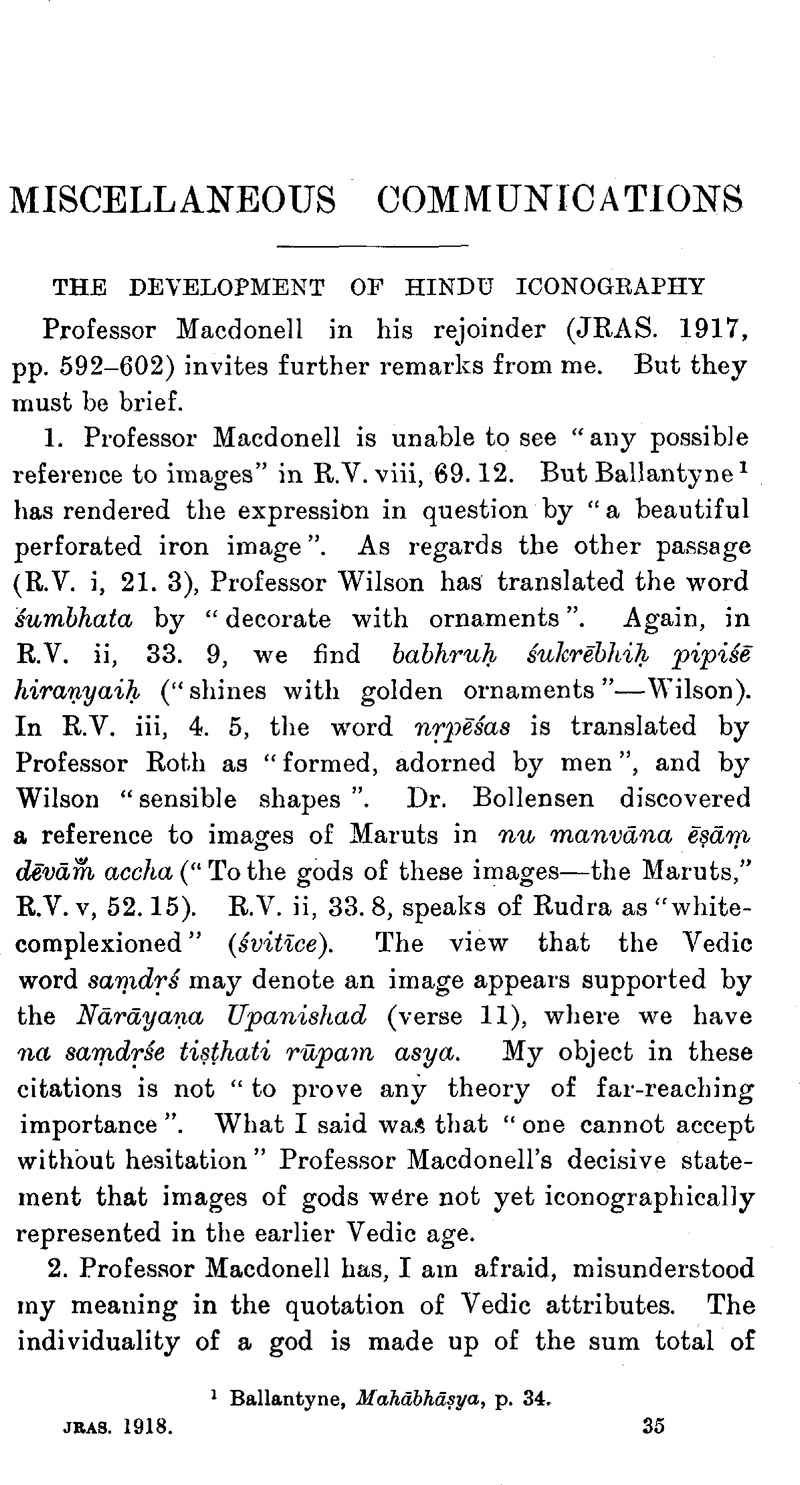No CrossRef data available.
Article contents
The Development of Hindu Iconography
Published online by Cambridge University Press: 15 March 2011
Abstract

- Type
- Miscellaneous Communications
- Information
- Copyright
- Copyright © The Royal Asiatic Society 1918
References
page 519 note 1 Ballantyne, , Mahābhāṣya, p. 34.Google Scholar
page 520 note 1 Indian Antiquary, 1915, pp. 41–52.Google Scholar
page 521 note 1 Probably the same as is described in the Catalogue of the Sārnāth Museum, p. 318Google Scholar (No. G24(c)). For Indra's thunderbolt in Buddhist art see Grünwedel, & Burgess, , Buddhist Art in India, pp. 38, 87.Google Scholar
page 521 note 2 Bṁhatsaṃhitā, ch. ii, vv. 47–8.Google Scholar
page 521 note 3 Dānakhaṇḍa, ch. ii, pp. 757 f.Google Scholar The ratha is mentioned, but not the horses.
page 522 note 1 Sastri, H. Krishna, South Indian Images of Gods and Goddesses, fig. 147.Google Scholar
page 522 note 2 Smith, V. A., History of Fine Art in India and Ceylon, p. 162 and fig. xxxv.Google Scholar
page 522 note 3 One of the works of the Sangam is assigned by Mr. Smith to as early a date as 100 a.c (Early History, 3rd ed., p. 453).Google Scholar
page 523 note 1 Smith, V. A., History of Fine Art, figs. 191, 192.Google Scholar
page 523 note 2 As always on Gupta coins. See also Cunningham's Bhārhut, plates xxi–iii (Śiri holding lotus in hand).
page 523 note 3 Ibid., p. 113; Catalogue of the Sārnāth Museum, pp. 318–20.Google Scholar
page 523 note 4 Smith, V. A., History of Fine Art, pp. 138, 163.Google Scholar
page 523 note 5 Catalogue of Coins in the Indian Museum, Calcutta, vol. iGoogle Scholar, see No. 1 of Kadphises II; Nos. 9, 10, 67, and 71 of Kanishka; Nos. 15, 16, 40, and 43 of Huvishka; and No. 1 of Vāsudeva.
page 524 note 1 The reference is to Mēghadūta (gōpavēṣasya Viṣṇōḥ).
page 524 note 2 Pāṇḍuraṅgaṣṭakam of Śaṅkarācārya.
page 524 note 3 Sastri, H. Krishna, South Indian Images, pp. 84, 148.Google Scholar
page 524 note 4 Catalogue of the Sārnāth Museum, pl. xviii, p. 165.Google Scholar Hēmādri describes Rudra with five faces and ten hands.
page 524 note 5 Sastri, H. Krishna, op. cit., pp. 77, 148.Google Scholar
page 525 note 1 The number of hands in a Sātvik image should never be more than four, and in a Tāmasik image never less than eight. Rājasik images have sir or eight arms (Śilpa-saṅgraha). The distinction is illustrated by the images of Naṭarāja in Sastri, H. K.'s book (op. cit.), pp. 77–88.Google Scholar
page 526 note 1 Rāmāyaṇa i, 15. 16.Google Scholar
page 526 note 2 Whether in the Veda, as in the case of Rudra and Agni; or in the Purāṇas, as in the case of Gaṇēśa and other gods; or in the Āgamas, Vaiṣṇava, Śaiva, and Śākta


